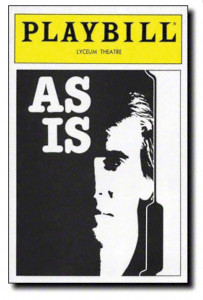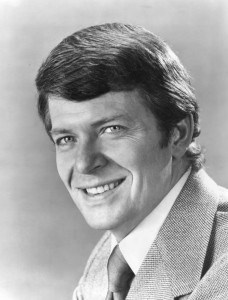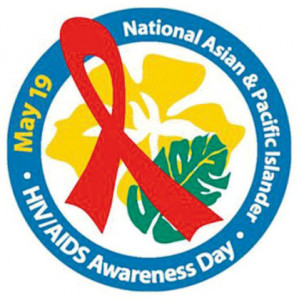AIDS is an everyday experience. The dates on this calendar all relate to the AIDS crisis. Some are globally known; others are drawn from personal experiences.
This online calendar is produced in partnership with Visual AIDS and is an extension of the exhibition “EVERYDAY,” which was curated by Jean Carlomusto, Alexandra Juhasz and Hugh Ryan in 2016. The exhibition and accompanying print calendar explored the AIDS crisis—historically and currently—through the lens of art and ephemera that examines and evidences daily experiences and practices in response to HIV/AIDS. Artists featured in the “EVERYDAY” exhibition were invited to submit as many dates to the calendar as they desired.
We invite you to reflect upon these dates, and this artwork, in dialogue with one another. We also encourage you to submit dates of your own by clicking here. Submissions may include the date of your diagnosis, the date of the loss of a loved one to AIDS-related illness or a significant milestone in your life with HIV/AIDS.
New submissions will be continually added to the calendar because AIDS is not over.
MAY 1

As Is opens on Broadway. The Tony-nominated play is one of the first to depict the effects of the AIDS epidemic. (1985)
ACT UP mounts a nine day protest focusing on drug use, homophobia, issues relating to people of color and women, testing programs, prison programs and HIV-positive children. (1988)
MAY 2
The first AIDS Candlelight March, “Fighting for Our Lives,” takes place in San Francisco and New York. (1983)
Brazil rejects a $40 million grant from the United States because it required organizations receiving funds to condemn prostitution, which is legal in the country. (2005)
MAY 3
Activists go to Albany to HIT THE DOCS (Department of Correctional Services), and demand medical treatment for prisoners with AIDS, declaring that “Living with AIDS in prison is cruel and unusual punishment.” (1991)
MAY 4
Tony Kushner’s Angels in America: Millennium Approaches opens on Broadway. (1993)
MAY 5
Photographer Therese Frare captures the renowned image of HIV activist David Kirby on his deathbed surrounded by his family. The photo was published in LIFE magazine that year, and a colorized version was subsequently used by Benetton in a controversial ad campaign. (1990)
HIV activists kick off the Campaign to End AIDS by leaving 8,500 pairs of shoes outside the White House to signify the daily number of global AIDS deaths. (2005)
President Obama launches the Global Health Initiative, a six-year $63 billion effort to develop a comprehensive approach to addressing global health in low- and middle-income countries. (2009)
MAY 6
The Group of Eight (G8) Summit includes a special focus on HIV/AIDS and announcements of new commitment to The Global Fund to Fight AIDS, Tuberculosis and Malaria. (2003)
Five Bulgarian nurses and one Palestinian doctor are sentenced to death by firing squad by a court in Libya for allegedly infecting 400 local kids with HIV. The six prisoners were eventually released after extensive negotiations between the European Union and Libya. (2004)
MAY 7
World AIDS Orphans Day
The U.S. Food and Drug Administration approves the first female condom. (1993)
MAY 8

Elizabeth TaylorMark Reinstein/Shutterstock.com
Elizabeth Taylor testifies before members of the Senate Committee on Appropriations about the need for greater investments in HIV/AIDS research, prevention and treatment. (1986)
AIDS activist Henry Nicols dies of injuries sustained during a car accident at age 26 in Cooperstown, New York. (2000)
MAY 9
Kaposi’s Sarcoma (KS) Research and Education Foundation formed, ultimately becomes San Francisco AIDS Foundation. (1982)
Vito Russo gives his “Why We Fight” speech at an ACT UP demonstration in Albany, New York. (1988)
The Christian Care Center, a nursing home facility in Johnson City, Tennessee, agrees to pay $90,000 to settle an HIV discrimination lawsuit filed by the U.S. Equal Employment Opportunity Commission for firing an employee living with HIV. (2014)
MAY 10
Susanne Bartsch hosts the Love Ball and raises more than $300,000 for Design Industries Foundation Fighting AIDS. (1989)
MAY 11
Philadelphia hosts a portion of the NAMES Project AIDS Memorial Quilt at the Philadelphia Armory. More than 7,000 people visit the Quilt during the four-day exhibition. (1989)

The first widely-released feature film about AIDS, Longtime Companion opens in theaters. (1990)
The U.S. District Court in Manhattan declares that the Helms Amendment, which passed in 1987 and requires federally financed educational materials about AIDS to stress sexual abstinence and forbids any material that “promotes” homosexuality or drug use, is unconstitutionally vague. (1992)
MAY 12

Robert ReedWikimedia/Edward Paul Reyes
Robert Reed, the patriarch on the TV series The Brady Brunch, dies at 59. It’s reported that HIV contributed to his death. (1992)
MAY 13
MAY 14
The Food and Drug Administration approves the first HIV home testing and collection kit. (1996)
MAY 15
Fifteen-year-old African-American teenager Robert Rayford dies; he is later believed to be the earliest case of HIV/AIDS in North America. (1969)
The U.S. Public Health Service adds HIV as a “dangerous contagious disease” to its immigration exclusion list. The HIV travel ban is not lifted until 2010. (1987)
Artist Nancer Lemoins wakes up after three months in a coma. (2007)
The Latino Commission on AIDS marks its 25th anniversary at its annual fundraiser, Cielo Latino. Designer and Project Runway All-Stars winner Mondo Guerra is the honorary cochair. (2015)
MAY 16
Artist Dudley Saunders performs In These Boxes at Dreamland, Louisville, KY. (2014)
MAY 17
MAY 18

HIV Vaccine Awareness Day
Lawrence Mass is the first journalist to write about AIDS in the New York Native. (1981)
U.S. Congress passes first bill that includes funding specifically targeted for AIDS research and treatment. (1983)
GMHC holds its first AIDS Walk in New York City. The event raises $710,000 and features Mayor Edward Koch and entertainer Peter Allen as special guests. (1986)
MAY 19

National Asian and Pacific Islander HIV/AIDS Awareness Day
MAY 20
Françoise Barré-Sinoussi, MD, reports the discovery of a retrovirus called lymphadenopathy associated virus that could be the cause of AIDS. (1983)
Photographer Albert J. Winn dies. (2014)
MAY 21
Storm the NIH—ACT UP protests at the National Institutes of Health, demanding more HIV treatments and clinical trials for women and people of color. (1990)
MAY 22
Artist darkroom danny attends his first support group. (2014)
MAY 23
AmfAR, The Foundation for AIDS Research raises a record $35 million at its 21st annual Cinema Against AIDS event. (2014)
MAY 24
Tales of the City, by Armistead Maupin appears in the San Francisco Chronicle. (1976)
MAY 25
Scientists announce they have spotted the signs of an HIV-like virus in chimpanzees in southern Cameroon. The discovery bolsters the theory that the first people to contract HIV did so through contact with infected blood from wild chimps in the jungle. (2006)
The Normal Heart, based on Larry Kramer’s play, airs on HBO. (2014)
MAY 26

Surgeon General C. Everett Koop mails copies of the booklet Understanding AIDS to all 107 million households in the United States. (1988)
Justin B. Terry-Smith diagnosed HIV positive. (2006)
MAY 27
The FDA licenses a rapid HIV diagnostic test kit that provides results from blood tests in 10 minutes. (1992)
Justin B. Terry-Smith creates his YouTube channel, Justin’s HIV Journal. (2008)
Longtime AIDS activist and author Larry Kramer dies of pneumonia at age 84. (2020)
MAY 28

Actor, writer and director Charles Ludlam dies of AIDS-related PCP pneumonia at age 44. His obituary is the first to appear on the front page of the New York Times to specifically list AIDS as a cause of death. (1987)
MAY 29
Vienna holds its first Life Ball, which becomes Europe’s premier AIDS charity event. (1993)
Mario Cooper, a Black HIV advocate who was an important link between grassroots AIDS activists and the political establishment in the epidemic’s early decades, dies at age 61. Cooper also linked AIDS activists to Black civil rights leaders. (2015)
MAY 30
Fashion designer Perry Ellis dies at age 46. His death was attributed to viral encephalitis and most newspapers at the time did not mention that he likely had AIDS. (1986)
Glenn Burke, an outfielder for the Los Angeles Dodgers and Oakland Athletics baseball teams, dies of AIDS-related causes. He was the first Major League Baseball player to come out as gay during his professional career. (1995)

Joan Hall
Artist Barton Lidice Beneš dies. (2012)
The Art AIDS WORK Conference is co-presented by Visual AIDS. (2008)
Governor Terry Branstad (R–Iowa) signs a bill into law creating a tiered sentencing system that replaces the previous one-size-fits-all approach to HIV criminal law. (2014)
MAY 31
The Los Angeles Times is the first mainstream paper to print a front-page story on AIDS. (1982)
President Ronald Reagan delivers his first public speech addressing the AIDS epidemic at an amfAR, The Foundation for AIDS Research fundraiser at the request of Elizabeth Taylor. (1987)
The exhibition Undetectable presented by Visual AIDS opens at La MaMa Galleria. (2012)
Cell Count, a new exhibition from Visual AIDS that tackles the topic of HIV criminalization and includes work by artists such as Barton Lidicé Beneš, Camilo Godoy, Chloe Dzubilo and Shan Kelley, opens at La MaMa Galleria in New York City. (2018)
About the Artwork

Chloe Dzubilo & T De Long,Untitled (Medical Alert Necklace), 2009, Handmade pills (polymer clay, acrylic paint) on metallic cord with gold clasp
Assembled as a piece of medical alert jewelry to identify the daily medication that Chloe was taking, the beads were made to resemble relics of a long term survivor’s past. For a caretaker, this was a quick recognition tool to reduce the error of drug interaction, specifically in a hospital emergency situation in which this information is not available.
—T De Long

Founded in 1988, Visual AIDS is the only contemporary arts organization fully committed to raising AIDS awareness and creating dialogue around HIV issues today, by producing and presenting visual art projects, exhibitions, public forums and publications—while assisting artists living with HIV/AIDS. Visual AIDS is committed to preserving and honoring the work of artists with HIV/AIDS and the artistic contributions of the AIDS movement.







Comments
Comments